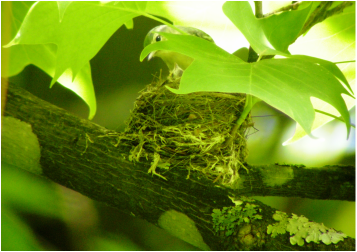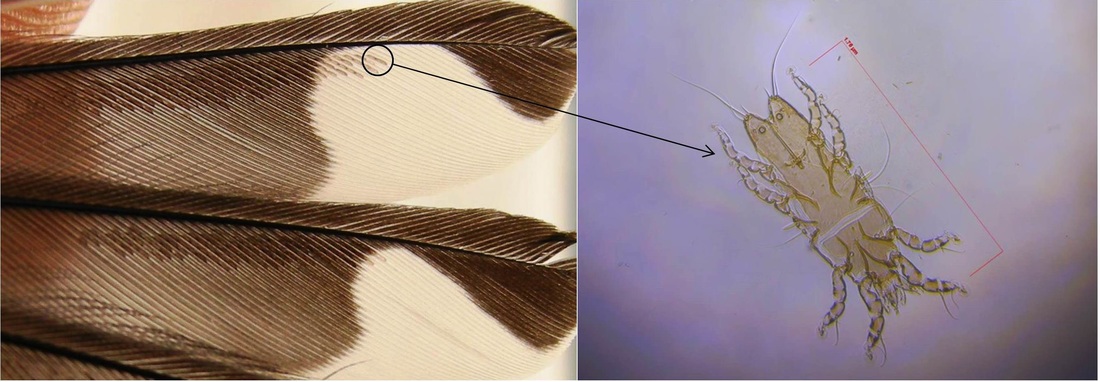We are interested in answering basic and applied questions in the fields of avian biology, ecology, evolution, conservation, and management. Almost all of our research is highly collaborative and we work with other researchers from across the US, Canada, and Latin America. Details of our research can be found below and on associated dropdown links in the tabs above.
|
Avian Conservation and Management
Unfortunately, over 12% of the world's bird species are currently threatened with extinction. This number is alarming, particularly given the important role that birds play in ecosystem functioning, their cultural significance, and their direct and indirect economic importance. We conduct applied research to answer important questions about how to best conserve and manage for birds before their populations reach these critical levels (while also evaluating how we can use natural resources in a sustainable manner). We are involved in several collaborative, multi-institutional/agency projects with the goal of determining how to best manage forests for the benefit of avian species (including the severely declining Cerulean Warbler). From our work, we have developed guidelines for timber harvesting that should be beneficial to this unique species. These collaborations have included Amanda Rodewald, Jeff Larkin, David Buehler, T.B. Wigley, Pat Keyser, and Petra Wood. See videos here.
We have also been involved in projects assessing the effects of Eastern Hemlock loss (due to the Wooly Adelgid invasion) on Louisiana Waterthrush in the Great Smoky Mountains National Park (with Tiffany Beachy at The Great Smoky Mountains Institute at Tremont) and a large collaborative project evaluating the factors driving bird-window collisions across North America (with Steve Hagar, Brad Cosentino, and many many others). Migratory ecology and connectivity
Birds are well known for their ability to travel long distances between their breeding and wintering grounds. For example, the Prothonotary Warbler breeds in the bottomland forests of the eastern United States and winters in the mangroves of Central and South America. These incredible journeys allow birds to take advantage of seasonal resources, but makes conserving migratory species difficult (particularly in a world full of political boundaries). We estimate the strength of migratory connectivity in species of conservation concern (including Prothonotary Warbler, Cerulean Warbler, and Scarlet Tanager) using geolocators and other miniature technologies. In collaboration with researchers from across the breeding range of these species (including Lesley Bulluck, Chris Tonra, Dave Buehler, Jeff Larkin, Scott Stoleson, Mike Hallworth, and Erik Johnson), we are looking to improve our understanding of these geographic connections, and in turn, better understand the factors which limit regional populations and eventually implement targeted conservation actions that address these limitations.
Range Expansion and Hybridization
Scissor-tailed Flycatchers and Western Kingbirds are sympatric species whom have both been undergoing eastward range expansion over the past 25 years. On the eastern front of these expanding ranges (near Memphis, TN), the two species hybridize and have done so to some extent over the past 15 yrs. We are exploring this unique hybrid zone to better understand the effects of this phenomenon on individuals and populations of these two species. This unusual type of hybrid zone may become more common as many other species expand their ranges northward in the coming decades.
See videos and photos here |
Disturbance ecologyMany vulnerable species of plants and animals are adapted to disturbances. We are interested in investigating these relationships and evaluating if, and how, human can emulate disturbances in regions where natural regimes have been suppressed or altered. For example, while deforestation is a major conservation issue worldwide, in some regions forest cover is increasing. In these regions, a lack of disturbance has had negative impacts on many native species. By using prescribed fire and partial timber harvest, we may be able to emulate natural disturbance regimes and increase habitat quantity, and improve habitat quality, for disturbance-dependent species. The most common method of assessing impacts of human activities is to document numerical responses (e.g., density); however it is important to also assess responses to disturbance in multiple ways. For instance, habitats may appear to be preferred (based on numerical response), but may in fact act as ecological traps, where animals are attracted, but fail to reproduce or survive at sustainable levels. We are interested in assessing multiple responses by organisms (e.g., reproduction, adult survival, age structure, physiological changes) to different types of disturbance, both natural and anthropogenic, at multiple scales (e.g., individual and population).
Signaling and Avian Communication
Many organisms display conspicuous secondary sexual characteristics that may convey information about the individual to others. In birds, ornaments often include brightly colored feathers (especially in males) which can reveal age, condition, immunocompetance, parental abilities, or aggressiveness, to both potential mates and competitors. We are interested in deciphering what colorful feathers, and other putative signals, mean and how these systems have evolved. We are also interested in how human impacts, and other environmental contexts, may impact ornaments and the honesty of the relationship between signal and information. In Cerulean Warblers, we have identified relationships between three different ornaments (structural blue crown, eumelanic black breast band, and achromatic white tail spots) and measures of condition, parental ability, feather growth, and aggression. We have also found that some ornament-quality relationships may be context dependent, where relationships exist in one habitat type (or geographic region) but not in others (which could act as a mechanism for maintaining genetic diversity or divergence).
Conservation Physiology
Traditionally, studies in conservation biology have evaluated the effects of anthropogenic activity on organisms through the examination of patterns (of diversity, abundance, survival, reproductive success, etc.) that result from environmental perturbations. However, these studies typically just identify ultimate patterns. I am interested in understanding the proximate causal mechanisms that lead to the patterns of conservation concern that we observe. For example, the underlying cause of a population decline can often be found in the physiological effects of anthropogenic alterations. These impacts could include changes in metabolism, nutritional reserves, endocrine activity, thermal relationships, or immune responses. Furthermore, these physiological effects may be long-lasting and may carry over between seasonal events (which is particularly interesting in migratory animals). With Graham Fairhurst, we investigated how stress from previous periods may affect future reproduction, migratory timing, body condition, and survival. Using novel methods to extract corticosterone from feathers molted on the wintering grounds and previous breeding grounds, we hope to uncover how the carry-over effects of stress from previous seasons may play a role in the decline of populations.
|
Ecology and co-evolution of feather mites and their hosts
Birds are hosts for a wide variety of ectosymbionts (including mites and lice) and it is commonly presumed that most of these invertebrates have co-evolved with their avian hosts. However, very little is known about the details of these intimate relationships (for mites in particular), including the identity of the ectosymbiont species, the nature of the relationships (mutualistic, commensalistic, or parasitic?), and the level of concordance between the phylogenies of the ectosymbionts and their avian hosts (perfect co-evolution or frequent host-switching?). Although the co-evolutionary default would be perfect concordance between the lineages of host birds and symbiont mites, we are testing several hypotheses that could explain patterns of host-switching that we may uncover.
Full Life/Annual Cycle Conservation
Almost all organisms go through many stages in their lives, some of which are easily studied, while others are much more difficult. However, to accurately understand what factors limit or control a population, all stages of an animals life need to be accounted for. We try to do this by identifying the life stages (and species) that have slipped through the research "cracks". These unknown stages could have important effects on vital population rates and may influence management/ conservation strategies. For example, little is known about what happens to many passerines after they leave the nest (the post-fledging period). This stage could be as, or more, dangerous than the nest period, but because of the difficulty in studying birds during this stage, it has often been ignored in population modeling efforts or assumed to be similar to adults when managing based on habitat selection patterns. We are evaluating survival and habitat selection patterns in post-fledging passerines (including Cerulean Warblers, above) in order to improve our ability to conserve these species across their entire life cycle.
|









